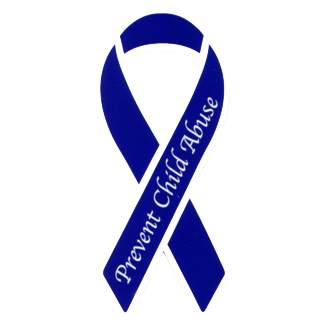National Child Abuse Prevention Month
April is National Child Abuse Prevention Month. This month-long initiative, first celebrated in 1983 after a presidential proclamation, is a time to raise awareness about child abuse and neglect.
The initiative encourages individuals and communities to support children and families. According to the Center for Disease Control and Prevention, there were 3.3 million reports of children being abused or neglected in 2008. Approximately 772,000 children were victims of maltreatment. Seventy-one percent of the children were classified as victims of child neglect; 16% as victims of physical abuse; 9% as victims of sexual abuse; and 7% as victims of emotional abuse. An estimated 1,740 children aged 0 to 17 died from abuse and neglect in 2008, with 80% of those deaths occurring among children under the age of four. With such statistics, it is easy to understand the need to raise public awareness about child maltreatment.
To underscore the importance of National Child Abuse Prevention Month, the President of the United States issues a proclamation every April. During the 2010 Presidential Proclamation, President Obama stated, “Every child deserves a nurturing family and a safe environment, free from fear, abuse and neglect. Tragically, sexual, emotional and physical abuse threaten too many children every day in communities across our Nation. Parents, guardians, relatives and neighbors all share a responsibility to prevent these devastating crimes, and our government plays a critical role as well.”
During April, communities are encouraged to wear blue ribbons to honor those children who have been affected by abuse and neglect. This tradition, known as the Blue Ribbon Campaign to Prevent Child Abuse, began in 1989 after a grandmother from Virginia tied a blue ribbon to the antenna of her minivan in remembrance of her late grandson who died as a result of abuse and neglect. Today, millions of people wear these iconic ribbons during the entire month of April to encourage this campaign and to raise awareness about this devastating social plague.
Besides wearing blue ribbons during April, communities are encouraged to take an active role in preventing child abuse and neglect. Research demonstrates that parents and caregivers who have support from family, friends, neighbors and their communities are more likely to provide safe and healthy homes for their children. Conversely, when parents lack support or feel isolated, they may be more likely to neglect or abuse their children. It is important for communities to promote the protective factors that have been shown to increase the health and well-being of children and families. These protective factors include: 1) nurturing and attachment; 2) knowledge of parenting and of child and youth development; 3) parental resilience; 4) social connections; and 5) concrete supports for parents.
Child welfare agencies and court professionals play a critical role in this crusade as well. Nationally, these entities are jointly responsible for identifying child abuse and neglect, protecting children, treating and strengthening families, and above all else, ensuring the safety and well-being of youth. In Pennsylvania, these tasks are accomplished through strong agency-court administrative collaboration and concentrated efforts such as the Permanency Practice Initiative (PPI). The PPI, currently active in 31 Pennsylvania Counties, implements a combination of strength-based, child-centered, family focused practices including Family Group Decision Making, Family Finding and Family Development Credentialing. These practices encourage agencies, courts and communities to focus their collective efforts towards reducing instances of abuse and neglect while strengthening families. To learn more about the Pennsylvania PPI visit: http://www.ocfcpacourts.us/permanency-practice-initiatives

